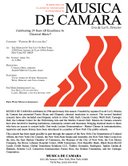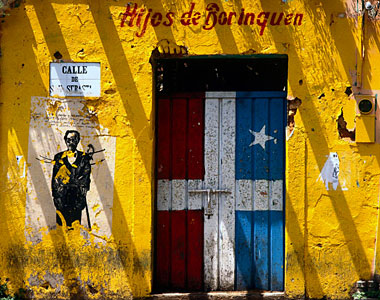Viewing on Wednesday & Thursday, February 18 & 19, 2PM – 10PM
R&G Ortiz Funeral Home
204 E. 116th Street, between 3rd & 2nd Avenues
212.722.3512
From: Aurora Communications, Inc.
Joe Cuba: Father of New York Boogaloo has passed away
The “Father of Boogaloo” Joe Cuba passed away on Sunday, February 15, 2009 at 4 p.m. at Mt. Sinai Hospital in New York. He was the most popular exponent of the boogaloo, a fused Latino and R&B rhythm that exploded onto the American top 40s charts during the turbulent 1960s & ‘70s. Hits such as “*Bang Bang,” “Push Push,” “El Pito,” “Ariñañara,” and “Sock It To Me Baby,” rocked the hit parades establishing Joe Cuba and his Sextet as the definitive sound of Latin New York during the ‘60s & ‘70s. The Joe Cuba Sextet’s unusual instrumentation featured vibraphones replacing the traditional brass sound. His music was at the forefront of the Nuyroican movement of New York where the children of Puerto Rican emigrants, America’s last citizens, took music, culture, arts and politics into their own hands.
Joe Cuba’s Sextet became popular in the New York Latino community precisely because it fused a bilingual mix of Afro-Caribbean genres blended with the popular urban rhythm & blues of its time creating a musical marriage between the Fania and Motown sound. His was the first musical introduction to Latin rhythms for many American aficionados. The lyrics to Cuba’s repertoire mixed Spanish and English, becoming an important part of the emerging Nuyorican identity.
Joe Cuba’s music validated the developing Nuyorican population whose language and music Cuba captured with his sound, underlines Giora Breil, CEO of Emusica, the company that now owns the Fania label and who has remastered many of the classics to a new generation of music lovers. “He led the urban tribe,” pointed Breil, “into a united front of cultural warriors that were defining the social and political times they lived in.”
Longtime manager and promoter Hector Maisonave recalls Cuba as ”an innovator who crossed over into mainstream music at an early time. He was the soul of El Barrio. After Joe Cuba, El Barrio is just a street that crosses an avenue.”
In 1962, Cuba recorded “*To Be With You” *with the vocals of Cheo Feliciano and Jimmy Sabater whose careers he spotlighted after the bands introductory appearance at the Stardust Ballroom prior to its summer stint in the Catskills.
Born in 1931 in the heart of Spanish Harlem, his Puerto Rican parents arrived in New York City in the 20s. Christened “Gilberto Miguel Calderón,” Cuba was a “doo wopper” who played for J. Panama in 1950 when he was a young 19 year old before going on to play for La Alfarona X, where the young “congüerro” percussionist replaced Sabu Martinez tapped to play with Xavier Cugat.
By 1965, the Sextet got their first crossover hit with the Latino and soul fusion of “El Pito” (I Never Go Back To Georgia), a tune Cuba recorded against the advice of the producer later to be “broken” by a DJ over WBLS FM in N.Y.. The Dizzy Gillespie “/Never Go Back To Georgia” chant was taken from the intro to the seminal Afro-Cuban tune, “Manteca.” Vocalist Jimmy Sabater later revealed that “none of us had ever been to Georgia.” In fact, Cuba later comically described a conversation he had with the Governor of Georgia who called him demanding why he would record a song whose chorus negatively derided the still segregated Southern town. The quick thinking Joe Cuba replied, “Georgia is the name of my girl.”
“Joe Cuba exemplified the power that comes from collaboration.” highlighted East Harlem’s councilwoman Melissa Mark Viverito. “Through his music, Joe brought together Latinos and African Americans and his art form reflected the influences of both cultures, Furthermore, his music united Harlem and East Harlem by reflecting the growth both communities experienced during the 1960s and ’70s. Joe Cuba made Spanish Harlem proud as he bravely brought his particular New York Latino identity to stages all over the world.”
In 1967, Joe Cuba’s band ––with no horns– scored a “hit” in the United States National Hit Parade List with the song “Bang Bang” – a tune that ushered in the Latin Boogaloo era. He also had a #1 hit, that year on the Billboard charts with the song “Sock It To Me Baby.” The band’s instrumentation included congas, timbales, an occasional bongo, bass, piano and vibraphone. “A bastard sound,” is what Cuba called it pointing to the fans, the people, as the true creators of this music. “You don’t go into a rehearsal and say ‘Hey, let’s invent a new sound or dance.’ They happen. The boogaloo came out of left field.“ Joe Cuba recounts in Mary Kent’s book:” Salsa Talks: A Musical History Uncovered. “It’s the public that creates new dances and different things. The audience invents, the audience relates to what you are doing and then puts their thing into what you are playing/,” pointing to
other artists such as Ricardo Ray or Hector Rivera as pioneers of the urban fused rhythm.
“I met Joe up in the Catskills in 1955,” /recalls nine time Grammy Award winner *Eddie Palmieri*. “When I later started La Perfecta,” Palmieri muses, “we alternated on stages with Joe. He was full of life and had a great sense of humor, always laughing at his own jokes,” chuckles the pianist. Palmieri pointed to Cuba’s many musical contributions underlining the power and popularity of his small band and bilingual lyrics while providing a springboard for the harmonies and careers of Cheo Feliciano, Willie Torres and Jimmy Sabater. “He was Spanish Harlem personified,” describes Palmieri recalling the “take no prisoners” attitude Cuba had when it came to dealing with those who reluctantly paid the musicians. Recalling their early recording days with the infamous Morris Levy, Palmieri cites the antics of Joe Cuba, Ismael Rivera and himself as the reason for Levy selling them as a Tico package to Fania label owner, Jerry Masucci.
Funny, irreverent and with a great humor for practical jokes, Joe Cuba, or Sonny as he was called by his closest friends, was raised in East Harlem. Stickball being the main sport for young boys of the neighborhood, Cuba’s father organized a stickball club called the Devils. After Cuba broke a leg, he took up playing the conga and continued to practice between school and his free time. Eventually, he graduated from high school and joined a band.
“He was not afraid to experiment/,” said *David Fernandez*, arranger & musical director of Zon del Barrio who played with the legendary Cuba when he arrived in New York in 2002.
By 1954, at the suggestion of his agent to change the band’s name from the Jose Calderon Sextet to the Joe Cuba Sextet, the newly named Joe Cuba Sextet made their debut at the Stardust Ballroom. Charlie Palmieri was musical director of the sextet before his untimely 1988 death from a heart attack.
Since then, the Joe Cuba Sextet and band has been a staple of concerts and festivals that unite both Latinos, African-Americans and just plain music lovers in venues all over the world.
In 2003, the following CDs were released:
* “Joe Cuba Sextet Vol I: Mardi Gras Music for Dancing”
* “Merengue Loco” and
* “Out of This World Cha Cha”.
In 2004, Joe Cuba was named Grand Marshall of the Puerto Rican Day Parade celebrated in Yonkers, New York. Musician *Willie Villegas* who traveled with Joe for the past 15 years said, “It didn’t matter where we played around the world Joe would always turn to me and say, To My
Barrio…. With Love!”
Joe Cuba is survived by his wife Maria Calderon, sons Mitchell and Cesar, daughter Lisa, and grandchildren Nicole and Alexis.
Condolences can be sent directly to Joe Cuba’s widow: Maria Calderon at mariacuba1@verizon.net.








